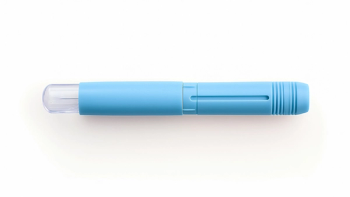
Despite Pandemic, FDA Ramps Up New Drug Approvals
CDER's process for vetting and authorizing important new therapies remained strong and productive last year, despite the need to deal with COVID-19 related approvals and policies.
The process for vetting and authorizing important new therapies by the Center for Drug Evaluation and Research (CDER) remained strong and productive last year, despite the need to devote considerable resources to dealing with COVID-19 related approvals and policies. CDER’s final count was 53 new molecular entities approved for market,1 plus another five new biologics from the Center for Biologics Evaluation and Research (CBER).2
And that doesn’t include important vaccines and drugs that received Emergency Use Authorizations (EUAs) from the agency to combat the pandemic.
The final tally for drugs falls short of the record number of 59 new drugs approved in 2018, but surpasses last year’s total of 48 new drugs. Approval numbers vary, as some analysts don’t count certain imaging agents or may add cellular therapies to the drugs list, and some new biologics are not considered therapies. Gilead Sciences, Roche, Eli Lilly and Bristol Myers Squibb all won notable new drug approvals, while a number of small newcomers entered the market. Cancer therapies led the tally, with 18 new therapies to treat lung cancer, breast cancer, multiple myeloma and other conditions. There were eight new therapies for rare conditions, and several for infectious diseases such as Ebola, malaria, Chagas disease, HIV and, certainly, COVID-19.
Analysts question whether the new drug approval rate will continue this year, with most inspections of manufacturing facilities and clinical sites still on hold and FDA issuing more complete response letters (CRLs) announcing delays in vetting new drugs for market. The continued rise in infections from COVID-19, moreover, will further strain agency resources as review staff is diverted to analyze submissions for new vaccines and therapies to counter the pandemic.
The agency also will experience important changes in leadership under the Biden administration, which often leads to policy changes and puts certain initiatives on hold. FDA recently announced that Janet Woodcock has become a principal medical adviser to commissioner Stephen Hahn. Last year, Woodcock stepped away from her long-held role as CDER director to head up the program for vetting therapeutics under the administration’s Operation Warp Speed. Now she also will work with Anand Shah, FDA deputy commissioner for medical and scientific affairs, to expand FDA’s COVID-19 Pandemic Recovery Preparedness Plan (PREPP). CDER deputy director Patrizia Cavazzoni continues to serve as the Center’s acting director, while Woodcock remains recused from participating in regulatory decisions related to new therapeutics.
Notes
Newsletter
Lead with insight with the Pharmaceutical Executive newsletter, featuring strategic analysis, leadership trends, and market intelligence for biopharma decision-makers.





